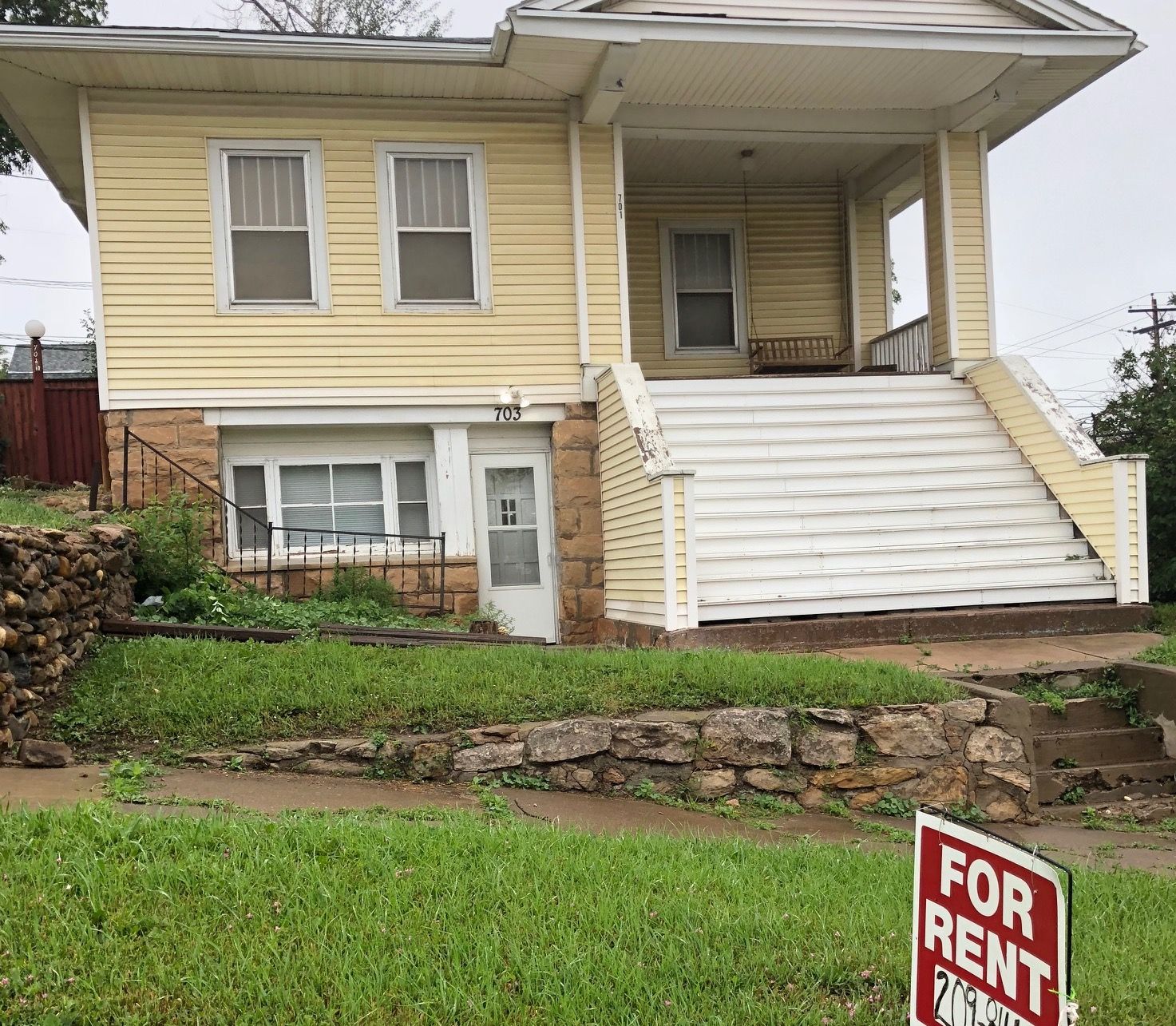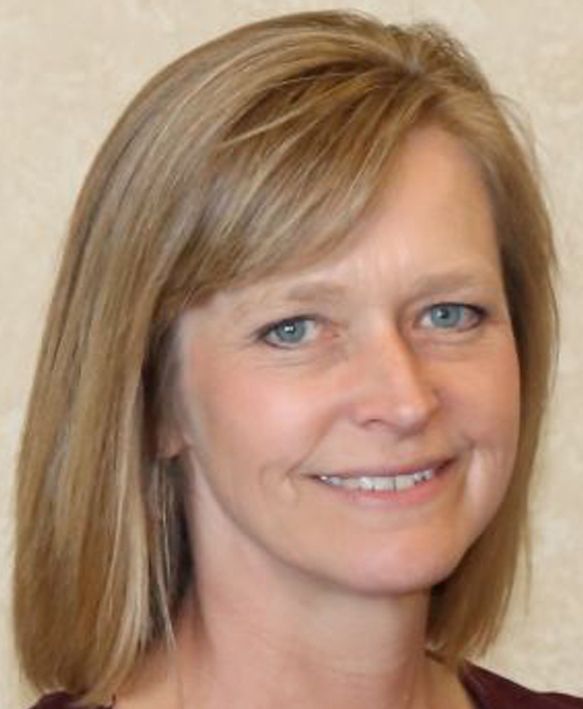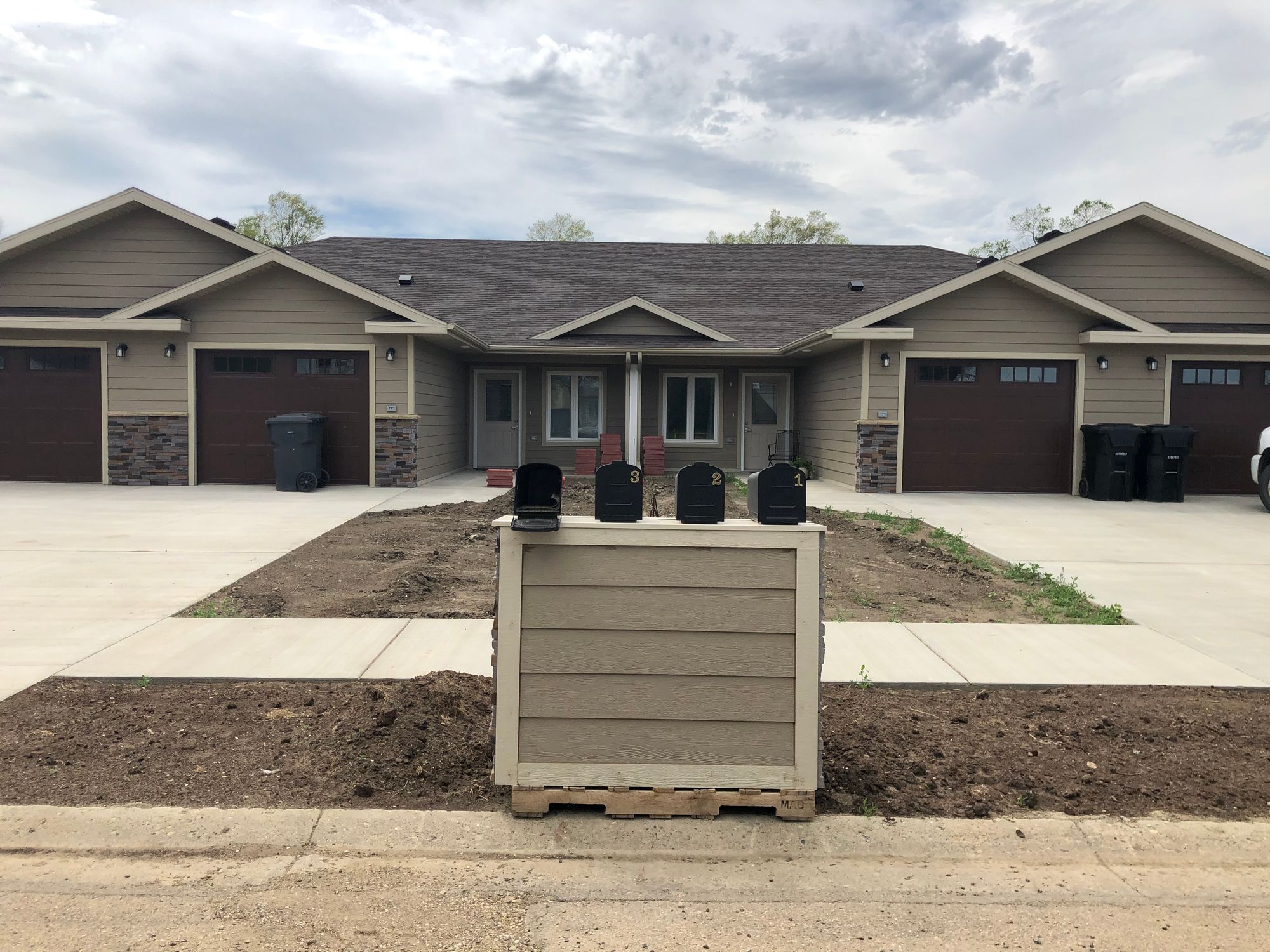South Dakota has sent millions of dollars of unused COVID-19 housing assistance funds — allocated to help low-income renters — back to the federal government, mainly because not enough people applied for help.
As of early January 2022, the state had received about $271 million in federal funding to pay rent and utilities of low-income residents who fell behind during the pandemic. But so far, the state has distributed only about $24.9 million to needy residents, or about 9.2% of the total available funding.
In September, South Dakota and other states that did not spend the money fast enough were required to return some of the money to the federal Treasury. That month, South Dakota returned about $22 million in unused housing assistance funds to the federal government, which is reallocating the excess money to states that are using it faster.
Several other states, especially those in rural areas or with smaller populations, have had to return unused housing-assistance funds. Overall, the federal government said disbursing the money to low-income renters has gone more slowly than expected across the country.
The program will continue to offer assistance at least until 2025. The federal government rejected requests by South Dakota officials to use the excess funds for other housing initiatives.

Lorraine Polak, executive director of the South Dakota Housing Development Authority, which is administering the housing assistance program for the state, said the state had to return funds for several reasons. One was that Congress gave too much assistance money to the state; another that less rental assistance was needed because South Dakota did not shut down its economy as some other states did early in the pandemic.
“South Dakota has been successful in getting ERA funding to the residents in need,” Polak wrote to News Watch in an email, referring to the federal Emergency Rental Assistance program. “Because our state didn’t shut down or require businesses to close, we had fewer requests for assistance than other states that took away people’s ability to provide for themselves. In addition, many of our residents are homeowners, and this program only applies to renters.”
Polak pointed out that with a population of under 1 million, and the assistance program limited to renters who qualify as low-income, there was no way the state could spend all $271 million from the program, part of which extends into 2025.

“We had more funds than necessary to meet the needs in our state,” Polak wrote. “It was best to return those taxpayer dollars to the Treasury.”
To help implement the program in a fast and functional way, the housing authority enlisted local agencies across the state to aid in the application process and allocation of funds that were ultimately paid directly to landlords and owners of rental properties.
Officials with two of those agencies said that while the program could have done more to help, especially for homeowners, they said Polak did a good job managing the program and that the state continues to help renters and landlords who are being hurt by the pandemic.
“The state and all the partners have been wonderful to work with, and we’ve all gone to great lengths to help a lot of people,” said Peter Smith, executive director of the Rural Office of Community Services in Wagner, which provides a variety of aid to residents throughout eastern South Dakota. “There’s a lot of stuff going on here that is beautiful, things that you don’t see.”
Smith said his team has sometimes driven long distances to hand-deliver assistance checks to landlords so renters could avoid eviction. He said the partnerships among local aid agencies and with the state housing authority have been strengthened as a result of the collaborative effort to run the housing program.
While those involved in administering the program see room for improvement — mostly by encouraging more people to apply and potentially expanding it to homeowners — many state housing officials view the program as largely successful in helping people maintain housing.
Polak said the state program has provided aid to about 4,000 households statewide, and Smith said his agency has aided about 1,350 families in 22 South Dakota counties.
“I would say the efficacy of the program has been excellent,” Smith said.
Some housing advocates and members of Congress have expressed concerns that some renters in the U.S. who need help due to the pandemic are not getting it, and that states need to do more to allocate the aid where needed.
The program’s challenges underscore the difficulty that federal, state and local governments have faced in distributing pandemic-assistance funds to those who need help in a timely, well-managed way that limits fraud and abuse.
State data show that in 21 of the 66 counties in South Dakota, fewer than 10 housing authority assistance applications have been filed, mostly in rural areas. The most populous counties, Minnehaha and Pennington, led the way in overall applications filed. Tribal communities were able to access federal housing assistance funds through other government programs.
“At the end of the day, hopefully everyone that needs assistance is able to get that, and I think $25 million is a lot of money,” Polak said in an interview with News Watch. “It has been quite a process, but it’s been a great opportunity to provide the assistance to households that need it, and it’s been a great opportunity with our partner agencies to work on this with each other in a statewide effort.”
How to apply for rental assistance
The rental assistance program is still offering help for renters and landlords who are facing financial challenges. Here are some resources to learn more about the program or apply.
Contact the South Dakota Housing Development Authority by phone at 605-773-3181 or go online to https://www.sdhda.org and click on SD Cares Housing Assistance.
These local agencies can also help potential applicants:
East River Legal Services – erlservices.org; 605-336-9230 or 1-800-952-3015
Minnehaha County Human Services — www.minnehahacounty.org 605-367-4217
Helpline Center, Statewide – https://www.helplinecenter.org
Codington County Welfare, Watertown – https://www.codington.org/welfare/
GROW SD, Sisseton – https://www.growsd.org
Interlakes Community Action Program, Madison – https://www.interlakescap.com
Lutheran Social Services – https://lsssd.org
Pennington County Health and Human Services, Rapid City – https://www.pennco.org/hhs
Rural Office of Community Services, Wagner – https://www.rocsinc.org
Western South Dakota Community Action, Rapid City – https://www.wsdca.org
Federal funds form basis of programs
South Dakota has used three separate federal funding programs to assist with housing costs for low-income residents during the pandemic. Legislators in 2020 used a special session to approve using $10 million in federal Cares Act funds to provide money for rent, mortgage payments and utility bills to renters and homeowners affected by the coronavirus pandemic.
Congress then approved two rounds of funding in 2020 and 2021 through the Emergency Rental Assistance program that set aside almost $47 billion to aid renters in states, large cities, U.S. territories and on reservations. Homeowners were not included in the ERA program and tribes were excluded from the second round of ERA funding.
The money was given to states to distribute to landlords and owners of rental properties to support low-income residents with rent and utility payments. The goal was to help renters stay housed and assist landlords who operated under a federal eviction moratorium from September 2020 to August 2021.
In January 2021, the federal government estimated that U.S. renters overall were in arrears by at least $20 billion and as much as $57 billion, potentially putting millions of American renters—particularly in minority communities—at risk of eviction. The eviction moratorium and economic slowdown during the pandemic caused many landlords and building owners to suffer significant financial losses as renters struggled.
South Dakota received $200 million in ERA-1 funds and $61 million in ERA-2 funding. When added to the $10 million appropriated by the Legislature in 2020, the state has received a total of $271 million in Cares Act funding in housing assistance, the large bulk targeted at renters.
Six months into the ERA-1 program, the U.S. Treasury reported that only $1.5 billion of the $25 billion allocated, or about 5.8%, had been provided as rental and utility assistance across the country. Two months later, the amount had jumped to $7.5 billion, or 30% of the total, still far below what Congress had intended.
In a report in May 2021, the Treasury noted that “while some state and local programs are increasingly reaching households in need, others lag far behind.”
In an October 2021 report, the Congressional Research Service noted that the low rate of expenditure of ERA-1 funds “has caused some to raise concerns about the effectiveness of the program in preventing evictions as eviction moratoriums end, and in addressing the backlog of rent and utility debt.”
Members of Congress have watched the program progress and some have expressed concern that the assistance is not being distributed in a timely fashion.
“There’s no question that the funds aren’t reaching landlords and renters quickly enough,” U.S. Rep. Maxine Waters, D-Calif., said during a House committee meeting on the ERA program in September 2021.
Some states were slow to implement systems to distribute the assistance, and some renters complained the paperwork requirements were too extensive or required computers and online proficiency. The Treasury reduced some paperwork requirements in ERA-2 compared with the first round of funding. ERA-1 assistance will end in 2022 but ERA-2 funds can be allocated through 2025.
However, as some states continued to lag in allocating assistance money, the Treasury in September 2021 enacted a “recapture and reallocation” process that required states that were not providing assistance fast enough to return money to the federal government, which likely will go to states with greater need or more efficient delivery systems.
For South Dakota, that resulted in the return of $22 million in housing assistance funds in September 2021, and more could be returned this spring, Polak said.
North Dakota, where about $15 million in assistance has been provided so far, officials have said the state expects to return $149 million of the $200 million it received in ERA-1 funding.
According to a South Dakota Housing Authority report in January 2022, about 3,800 households statewide had received some federal housing assistance, while about 1,850 applications were abandoned after being started.
Polak said it is impossible to identify why some people dropped out of the application process, as applicants perhaps returned to work, moved out of state or found the process too burdensome.
South Dakota housing officials twice asked the federal government for flexibility to spend unused rental assistance funds on programs such as those to build new affordable housing, but were rejected both times, Polak said.
U.S. Rep. Dusty Johnson, R-S.D., said in an email to News Watch that he supports letting states use ERA funding in other areas if they aren’t able to spend it all on rental assistance.
“The Biden Administration flooded states with cash and they can’t spend this money fast enough,” Johnson wrote. “I’d like flexibility for states to spend unused dollars on things like roads and bridges before [C]ongress considers even more inflationary deficit spending.”

Improvements suggested as program goes on
Some states hired private contractors to administer the program, but South Dakota handled allocation of funds through the South Dakota Housing Development Authority, an arm of state government.
The authority, which typically works with developers and other established housing partners, was immediately tasked with developing a complex new system to provide direct financial assistance to landlords, Polak said.
The housing authority enlisted the help of several local aid agencies across the state to let low-income residents know about the program and to administer the first steps in applying. Local agencies also played a key role in getting approved funding directly to landlords.
The housing authority was aggressive in trying to get the word out about the availability of assistance, Polak said, posting information on the agency website, working with local aid agencies to inform their clients of the opportunity for help, and providing notification through utility companies, daycare providers and churches.
The authority and its local partners also spend significant time with applicants, assigning case workers to aid each renter and conducting extensive follow-up through the application and aid allocation processes, Polak said.
“In essence, we’re talking with every applicant; some of them have my direct number,” she said.
Mike Walker, executive director of NeighborWorks Dakota Home Resources, said his agency participated in the first round of housing-assistance funding but declined to partner with the state in the second and third rounds. His agency, based in Deadwood, serves people western South Dakota.
Walker said the initial housing-assistance program allowed agencies to provide aid to households in both low-income and medium-income categories and to those who owned their homes. In the first round of funding, homeowners and renters who earned up to 115% of the median area income could qualify for help, whereas the second two rounds of federal funding were restricted to renters who make up to 80% of the median area income, Walker said.
“When they [the federal government] did that, that they eliminated over half their customers,” Walker said. “By limiting that and giving a lot larger dollar amount, they over-allocated.”
For instance, Walker said many working families in western South Dakota make enough to qualify for help at the 115% median income level, which is about $86,700 a year for a family of four in Lawrence County. But those families, many who lost work hours and faced financial hardships during the pandemic, did not qualify for help at the 80% median income threshold, which is about $60,300 a year in Lawrence County.
“When they put those limits on there, they eliminated some of the people who really needed the help,” Walker said. “That’s the main reason the money didn’t go out.”
The different rules came about because the first round of funding was approved by the state Legislature, and the two subsequent rounds are subject to rules set by the U.S. Treasury.
Smith said he would like to see the assistance program help more homeowners with back mortgage payments; those residents qualified only for the initial $10 million funding effort authorized by the state Legislature in 2020.
But Smith said he sees the housing-assistance program as a great success, even if opportunities to use funding to help even more people are not available right now.

“On the ERA program, our caseworkers are doing a bang-up job. Has it been helpful, have we seen the impact on people’s lives? Yes, we have,” Smith said. “Have we seen people go forward with their lives, and getting their jobs and lives going forward? Yes, we have.”
Polak said the rental and utility assistance programs are ongoing, and she urged any tenants or landlords who are struggling to visit the housing authority website or their local aid agency to learn how to apply for funding. She also noted that other programs coming soon to South Dakota will be aimed at providing help to homeowners as well as renters.



